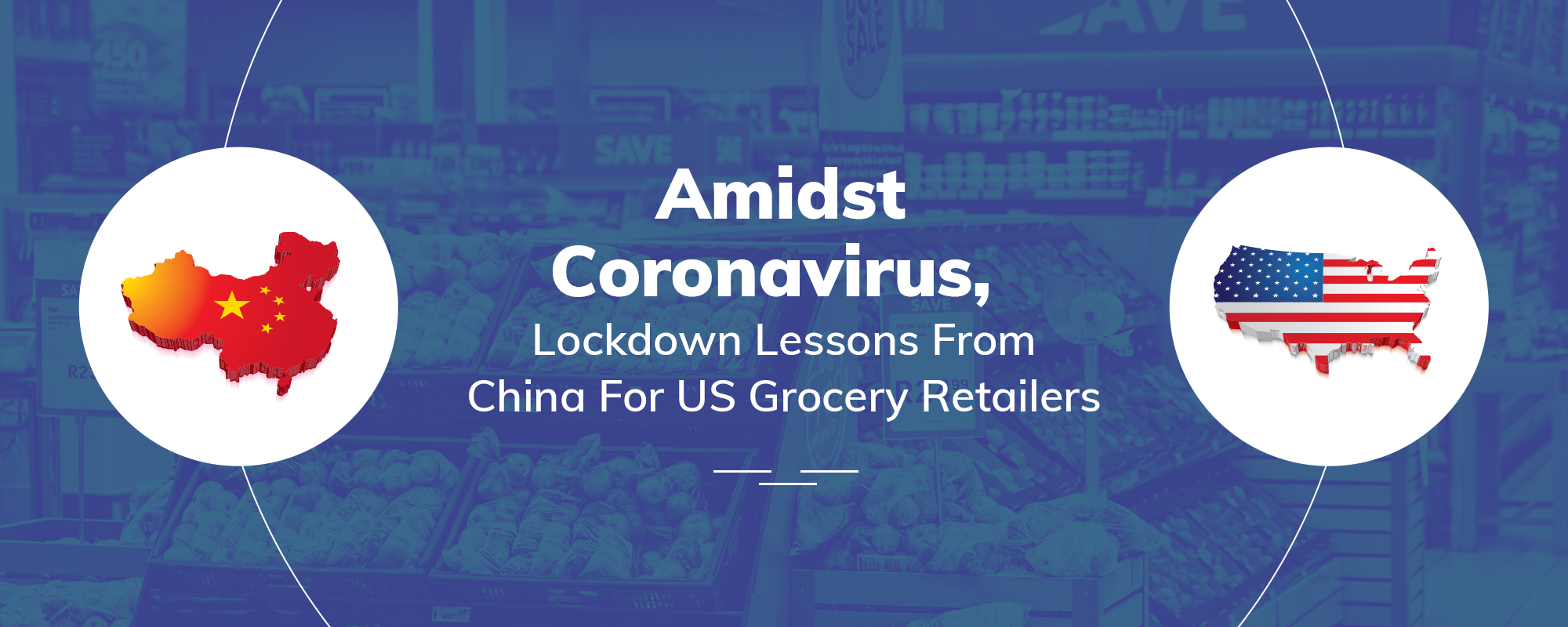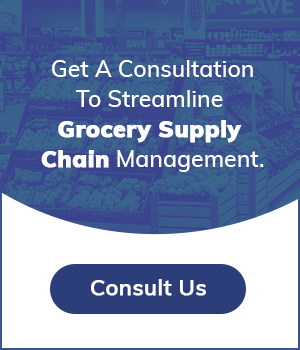Amid coronavirus, the US grocery retailers are responding to an unprecedented demand that strains the entire industry. On one hand, customers from all demographics have shifted to digital ordering; in what’s been described as panic-buying people are buying grocery items in bulk, ushering a new normal for the grocery industry that may last for a long time in the future.
On the other hand, the US grocery retailers are trying to make big changes to streamline the delivery process and to fulfill user’s demand for groceries in a minimum amount of time.
There’s been a quick switch to provisional measures like realignment of supply chain and building of a robust sales & operations planning (S&OP) process to keep the demand on par with supply, but:
- Do the US grocery retailers have a full, accurate understanding of the changes in consumer end-demand?
- What steps are they taking to minimize the supply chain risks and disruptions?
- Are they prepared to grasp potential growth opportunities in the grocery sector?
- Are they prepared to achieve a transcendent development or overtake peers after the coronavirus reaches its turning point?
The grocery delivery services in the US were supposed to offer ultimate convenience amid the coronavirus pandemic. But they appear to be falling short of user expectations.
Of course, there is no easy answer available, but a lack of relevant business-handling models and the absence of industry-specific instructions from governments & higher authorities could be a few underlying reasons.
But what the grocery industry experts at FATbit believe is that the US retailers could learn a few things from other countries that are weeks ahead in responding to this global pandemic.
We are talking about China.
In China, at the peak of Coronavirus, around 750 million people were living under lockdown but deliveries of groceries were often as quick as 20 minutes away.
Their response during the lockdown was characterized by a high degree of flexibility in the processes applied and technologies deployed.
Grocery Delivery Challenge During Coronavirus: US vs China
In the middle of March, Amazon suspended its Prime Pantry service in the US to catch up with the excess volume of orders. Also, according to numerous complaints on social media, there was no delivery available on Amazon Fresh, Walmart, Instacart, and Shipt. These companies were and are still facing a huge logistic challenge.
On the other hand, Chinese grocery delivery services were not only immune to logistical issues but they had some advantages over Americans.
Chinese consumers were already purchasing most of their groceries from mobile apps.
Both consumers and companies were used to this behavior (aggressive buying) and even the grocery delivery system could support a reasonably large amount of demand. According to eMarketer, “China’s online retail market was worth nearly $2 trillion in 2019.” And around 33 percent of users were ordering online groceries through mobile apps. During coronavirus, this number is increased by 10-15 percent.”
In the US, there are a lot of people who moved from the traditional offline grocery shopping onto digital during this pandemic. The downloads of grocery delivery apps swelled in the United States. Grocery giants such as Instacart, Walmart, and Shipt have seen respectively 218%, 160%, and 124% increases in average daily downloads of their app. But the online grocery eCommerce platforms are not used to this. Therefore, it has put extreme pressure on them.
Also, China’s eCommerce companies have invested immensely in warehouse automation and contactless delivery. American grocery retailers can’t demonstrate such flexibility.
China’s Grocery Delivery System: A Lesson for American
To streamline the grocery delivery service, the following practices were adopted and executed successfully by China. The US grocery retailers should learn from them and pave the way for efficient supply chain management and customer satisfaction.
Digitally Enabled Delivery Systems
Grocery retailers in China faced an immediate challenge of how to provide delivery items in Wuhan that was the epicenter of the coronavirus outbreak. Here JD.com, the largest retailer in China has played a major role.
They deployed their smart vehicles (driverless) to Wuhan borders, loaded the city map, and delivered the grocery items and other necessities to various communities in Wuhan. Many experts have suggested the US grocery delivery companies to do the same but till now, those calls have gone unanswered. Also, as the US is in lockdown, the empty streets are an ideal ground for this kind of delivery experimentation.
Use of Talent
In the US, eCommerce companies are facing a huge shortage of human resources. As a result, we’re seeing many go on hiring sprees, including Instacart (300,000 contractors), Walmart (150,000 workers), Amazon (100,000). The Chinese e-commerce companies have faced the same problem but they opt for a different solution.
JD.com’s 7Fresh branch and Freshippo, a grocery subsidiary of Alibaba, hired workers from shuttered restaurants and other retail outlets. They only had to provide limited training in the e-commerce context, and after that, they could leverage these workers’ supply chain and logistics skills.
Moreover, they also started delivering semi-processed “ready to cook” food by using the skills of these workers.
Spot and work on new consumption habits that are being formed
Many offline grocery stores in China have started delivery services and have invested heavily in digital marketing for offline-to-online transformation. On the other hand, most of the offline grocery retailers in the US haven’t been able to take their business online. The main reasons are the lack of resources and fear of failure.
Look for Opportunity Amid Adversity
In China, big online grocery retailers have established partnerships with local retailers in various provinces and enlist them on their websites so that people can order groceries from these stores.
This multi-vendor grocery business model proves to be beneficial to everyone.
Know more about the Online Multi-Vendor Grocery Business
Conclusion: Situational Thinking + Phased Execution
There’s little doubt that US grocery retailers can leverage technology much more effectively to operate remotely and conduct business. One must focus on two things:
Situational Thinking
Grocery retailers should monitor changes in consumption habits i.e. identifying the impact of stress during coronavirus on consumers’ behavior and other vital points in the consumption experience. Also, grocery retailers should proactively respond to the product and supply chain levels to show their concern for the people.
Phased Execution
Plan your strategies in three phases:
- Short Term: Fulfill your social responsibilities of providing groceries.
- Medium Term: Design and optimize services by analyzing changes in consumer habits.
- Long-Term: Make strategic arrangements by predicting possible consumption growth with comprehensive consumer data and make yourself ready for the peak in grocery demand.




